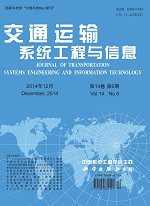In order to explore the efficiency volatility and influence factors of Chinese modern transportation industry based on the data from 1978 to 2012, the Cross-efficiency DEA and VAR model are adopted. The result proves that, one- way Granger casualty relationship exists, respectively, between the input variables and output variables; the efficiency volatility of modern transportation can be divided into three stages: efficiency improvement, high efficiency operation and efficiency loss, which shows the trend of “rising first, then falling”in general; the response of transportation industry to the shock of per capita consumption, government spending, energy consumption and fixed- asset investment are positive, while to the shock of labor factor is negative, what’s more,“lag effect”exists in the response of transportation industry to the shock of information element.


